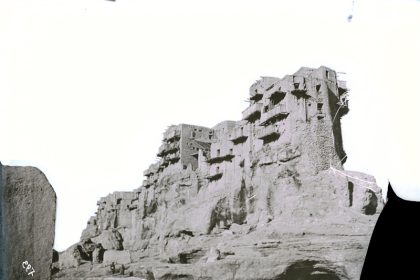Special and personalized trips allow you to create unforgettable moments by discovering lesser-known places and unique experiences.
Traveling has become one of the most enjoyable and favorite activities in today’s world. Despite the diversity and abundance of destinations, why do we always have to travel to repetitive and ordinary places? The personalized travel map allows you to design a unique trip according to your taste and interests. In this article, we will show you how you can have a special and memorable trip.
1. Identification of interests and tastes
First of all, think about your interests and tastes. This step is very important; Because identifying interests can determine the overall path of the trip. To start, make a list of activities you like to do. Are you interested in nature, history, art, food, sports or adventure? You can also reflect on your past travels and learn from them. What did you like and what not? This analysis can help you choose new destinations that match your tastes.
Checking trends and popular topics on social media can also give you new ideas. For example, if traveling to unusual places is trending, you may want to travel to these areas. If you are interested in history, you can go to the ancient cities. If you love nature, you might want to travel to national parks or mountains.
Photo source: emeraldpalate.com, photographer: unknown
2. Research about different destinations
After identifying interests, it’s time to research different destinations. You can use various sources for this. Travel websites like TripAdvisor and Lonely Planet can give you useful information about destinations. User comments on these sites can help you choose the right destination. Additionally, guidebooks can provide more detailed information about local culture, history, and attractions. Investigating the local culture and knowing the customs of the native people will help you to treat the local culture with respect.
Checking the opinions and experiences of other tourists on social networks or tourism sites can also help you to benefit from the real experiences of others. Look for real photos and videos that show the real attractions and conditions of the destination. For a historical trip, you can look for destinations such as Hamedan, Yazd or Isfahan, each of which has its own interesting stories and rich culture.
3. Travel route design
Now that you’ve chosen your destinations, it’s time to plan your itinerary. This step includes choosing the order of visiting the places and calculating the travel time. You can use map apps like Google Maps or Citymapper to help you find optimal routes and calculate travel time. You can also use these applications to check traffic and road conditions.
For each attraction, specify the approximate visit time so that you can plan carefully and avoid wasting time. Also consider time to rest and eat. Additionally, allow times for breaks, such as breaks, meals, and unexpected activities.

Photo Source: blog.iholiday.com.au, Photographer: Unknown
4. Add unique experiences
Personalized travel means adding unique experiences. At this point, look for local activities that allow you to connect with the destination culture. Attending local cooking classes can be an interesting experience. In these classes, you can learn how to prepare local dishes and get to know the food culture of the destination.
You can also participate in art workshops and experience local art and culture up close. These workshops usually include woodwork, pottery or weaving. Additionally, by participating in local projects or community activities, you can connect with and help the local community. Also, visiting the local markets is a great opportunity to buy souvenirs and learn about local products and foods.
5. Time and budget planning
Before starting your trip, you need to plan your time and budget. This step will help you avoid financial and scheduling problems and enjoy your trip more. Be aware of the costs of travel, accommodation, food and activities and use online resources to compare prices. Also look for discounts and special offers.

Photo source: tabsgi.com, photographer: unknown
Always keep a little extra budget for emergencies. This budget can include medical expenses, sudden changes in schedule, and additional expenses due to new activities. Using financial management apps can help you control your expenses.
6. Record experiences
During your trip, be sure to document your experiences, which can include taking photos, writing notes, or even recording videos. These souvenirs will help you to remember the special moments of the trip and share them with others. If you’re into filming, make a travel video and capture your memories visually. These videos can include everyday travel scenes, foods you’ve tried, and special moments with locals.

Photo source: wired.com, photographer: unknown
7. Travel sharing
After returning from the trip, share your experiences with others. You can share your travel stories and tips through blogs, social networks, or even in friendly groups. Share travel experiences and stories in the form of a detailed article or a series of posts.
You can also share your travel experiences with friends and family and encourage them to travel in the future. This can motivate others to travel as well.
A personalized itinerary allows you to have a unique experience tailored to your tastes. By identifying interests, researching destinations, planning an itinerary, and adding special experiences, you can create a trip you’ll never forget. Remember that travel is not just about places and experiences, cultures and connections along the way are also important. These experiences will help you discover a new world and connect more deeply with yourself and others. Have a nice trip! If you wish, you can tell your valuable companions about your special experience and memories during the trip.
Cover photo source: wanderlustcrew.com, photographer: unknown
RCO NEWS
















